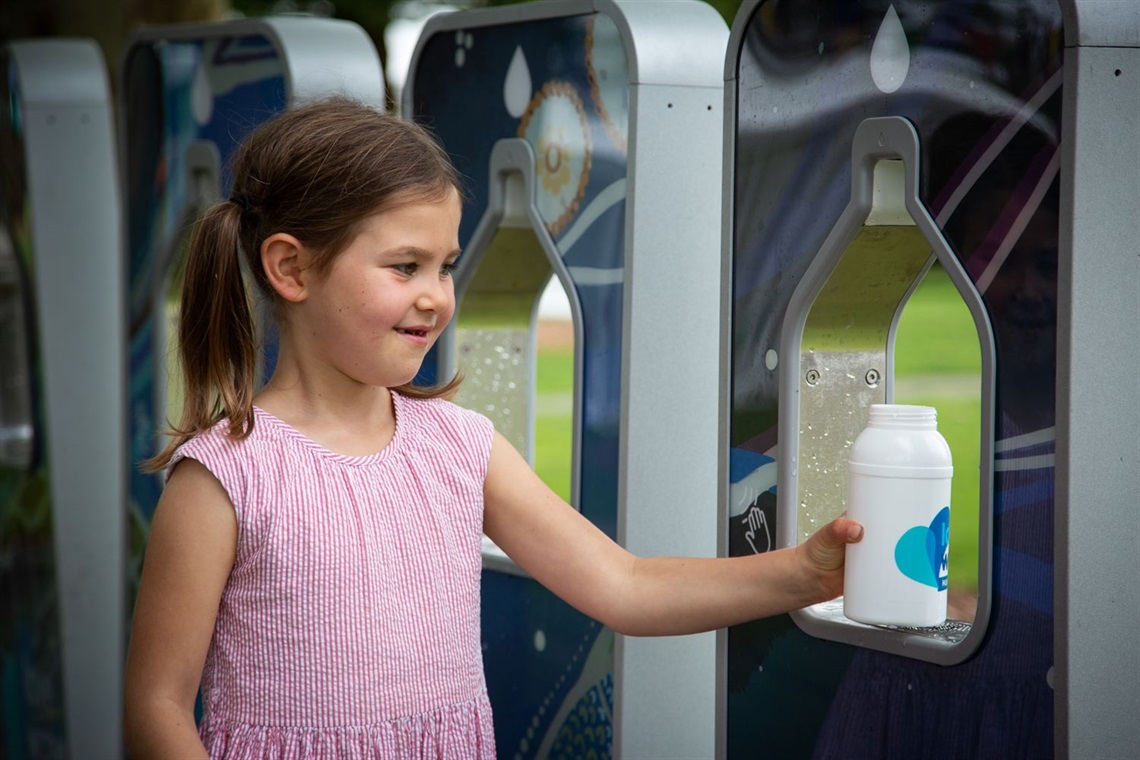Lake Mac water station results good enough to bottle
Published on 04 November 2022

More than 100,000 water bottles have been saved from landfill over the past two years thanks to water stations at key locations across Lake Macquarie.
Lake Macquarie City Council partnered with Hunter Water in 2020 to install the stations at five high-traffic spots: the Fernleigh Track at Redhead, Speers Point Park, Caves Beach, Cardiff Library and Belmont Baths.
Council’s Senior Asset Optimisation Officer Angus Fanning said those five stations had poured out more than 50,000 litres of water in the two years since, quenching the thirst of users.
“That’s the equivalent of more than 100,000 plastic bottles’ worth of water,” he said.
“Simple initiatives like this play an important role in reducing single-use plastics, as well as reinforcing the ‘Love Water’ messaging that helped get us through the most recent drought.”
Laid end-to-end, those bottles would stretch from Speers Point to Blacksmiths. Hunter Water Executive Manager Laura Hails said Hunter Water was proud to partner with Council on this initiative.
“These water stations are helping our community make smart water choices every day,” she said.
“Water is fundamental to life and by managing this precious resource sustainably, we can ensure the health and wellbeing of our community and environment.”
Mr Fanning said plans were underway to roll out more water stations, each of which features a water bottle refill tap and a dog water bowl.
“We’re seeking input from the community about where those new stations could go,” he said.
“The idea is to target busy locations where people are outdoors exercising and need to rehydrate.”
The initiative has further strengthened the ongoing collaboration between Council and Hunter Water on water conservation.
The two organisations earlier this year launched a joint project to irrigate sports grounds at Edgeworth and Cameron Park with 20 megalitres of recycled water – enough to fill eight Olympic swimming pools.
“This investment will ensure the playing fields can be used year-round, and helps improve the resilience of beautiful assets that are important to the community,” Ms Hails said.
“By working together we can create a sustainable water future for our region.”